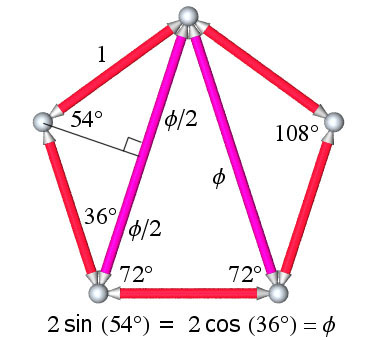Neolithic Math
Contents
Oregon Curriculum Network: A Digital Mathematics
Introduction
Neolithic Math complements Martian Math, though each may be learned and explored independently of the other. The emphasis in this module is on primitive artifacts. TOPS Science of Canby, Oregon is an influence. Scholar Glenn Stockton is a source of segments on lore, interpreting artifacts as primitive maps, models and navigation tools.
A typical activity in Neolithic Math would be Euclidean geometry as practiced on a sandy beach with a compass and straight edge. A piece of string tied to a stick may serve to generate a circle, and the stick, in relation to the sun, will cast a shadow, to generate a primitive sundial. Such are the origins of our lesson plans, subject to treatment though animation (cartoons) as well.
The Time Dimension
One reason for packaging this content as Neolithic Math is for contrast with the futuristic material in Martian Math. Another is to take advantage of more recent scholarship regarding Sumerians, other pre Helenistic cultures, and restore some of their credibility and luster as world-aware civilizations, successfully guided by competent astronomers and mathematicians.
The term Neolithic connotes looking in the direction of prehistory, moving towards the present day. The actual Neolithic Period was characterized by a high degree of workmanship. Tools were used to make other tools.
Partially overlapping time lines are apropos. When did people first invent what? How were these inventions spread, traded around?
We are not confining our attention exclusively to a particular era so much as committing to an historic dimension, to the relevance of lore (stories), from the distant past right up until our present day, embracing GIS/GPS, and projecting onward into a shared future.
Stories serve as a means of encoding mathematical information, sharing about the context and origin of mathematical ideas and inventions, such as the abacus, and trigonometry.
The prefix "neo" also suggests a renaissance or resurgence (a surge), not because of an apocalypse or Armageddon, but out of pride in humble beginnings and their coming into vogue through retro fashion, literary allusion, high tech archeology. There's an implied philanthropic attitude towards the Earthlings, an encouraged compassion.
| External Links |
Other Modules
Besides Martian Math, this module interfaces with Supermarket Math and Casino Math.
- Supermarket Math deals with urbanization and the mathematics of trade and exchange (currencies, promissory notes).
- Casino Math deals with the mathematics of simulation, scripting (programming, algorithms), speculation.
Casino and Supermarket Math comprise more of a cross-section or time slice, bracketing speculative risk taking versus business as usual in any given age.
Gambling in the sense of playing games of chance, some involving skills, connects historically to divination, doing readings (of tea leaves), investing in possible futures, alternative battle plans. Neolithic Math invites exploration of these historical schemas (example: I Ching), some in use to this day.
Teacher note: In contemporary psychological terms, our topic, in surveying the rituals of divination, is intuition and/or the collective unconscious and its relation to rationality and the process of individuation (self actualization). Art and music have a role in this relationship, as do day dreams, imaginative play.
Topics
Simple tools
...such as used by the ancient greeks in their study of geometry, may be used to derive the basic lengths required to build polyhedra. The vesica piscis and associated hexagon, the square root as a square's diagonal, the Pythagorean Theorem, square roots of 3 and 5, the golden mean (phi)... Neolithic Math traces the derivation of elementary spatial geometry. In terms of a curriculum sequence, we're looking ahead to Martian Math for more context and contemporary applications (e.g. geodesic spheres and domes).
Architectural strategies
...from cliff-side cave dwellings to pyramids, teepees to yurts, great temples to suspension bridges, all get their beginnings in Neolithic Math, perhaps through some naturally occurring example. The invention of the arch, and the dome as a kind of rotated arch, bring us up through Roman and Gothic periods. Mosques and the more onion-shaped domes help round out this segment. The construction of sea-going vessels, not just cathedrals, is likewise a focus, and our bridge to navigation instruments and cosmological models.
Cosmological models
...especially of local terrain, and the voyage of self-discovery whereby world travelers (explorers, conquerors... tourists) assemble a view of their place in a grander scheme of things, are foci in this curriculum. The ways in which civilizations encoded their awareness of astronomical events and locations, the Tropics of Cancer and Capricorn, the relationship of lunar to solar periods, the constellations, provide grist for our mill.
Village life
...and the cultivation of surplus for bartering purposes provide segues to Supermarket Math, as well as to Casino Math wherein we develop simulation games incorporating elements of chance (luck) and rewards for skillful play.
Investigations
Place-based education means availing of the local environment. Cultivating fruits and vegetables in an urban farm setting is a focus of Portland's Environmental Middle School, just a few blocks from The Bagdad. Winterhaven, another PPS facility, avails of Oaks Bottom, a relatively pristine wetlands with shared use zoning for cyclists and train engineers. Out towards the east, the Columbia Gorge features extensive lessons in Neolithic lifestyles, some of which centered on Celilo Falls. Other districts will have different history and geography. However, no region of planet Earth is bereft if its geological history and archeology. Teachers have, as their special challenge and area of expertise, the ability to bring local history into the foreground, with Neolithic Math forming a mythical prehistory or cosmology in some classrooms.
If your school is able to provide tutoring in cultivation, consider the mathematics of seasonal planting, acreage, likely inventory (yield), futures markets, farmer cooperatives (such as Tillamook's) as a useful segue to Supermarket Math with its cooking shows (ala Julia Child) saved to the school intranet for archiving and replaying.
